
This web page contains tornado facts for kids and is a great resource for anyone of any age researching tornadoes. Our goal is to provide you with the latest and most accurate tornado facts from scientific sources. In addition to tornado facts, you’ll find some amazing tornado pictures and additional resources for researching tornadoes.
The tornado facts listed below will help you discover what are tornadoes, how tornadoes are rated, where tornadoes are most likely to occur, records set by past historic tornadoes and other tornado facts. We hope these facts about tornadoes are helpful, and you learn more about this devastating meteorological event.
If any of the below tornado facts are inaccurate, please contact us and let us know.
23 Tornado Facts for Kids
- Tornadoes are violent weather events that can cause a lot of damage and loss of life.
- A tornado is sometimes referred to as a cyclone, twister or whirlwind.
- Tornadoes are columns of air that rapidly rotate from the base of a cumulonimbus or cumulus cloud and make contact the Earth’s surface.
- When a tornado forms, but doesn’t contact the Earth’s surface it’s called a funnel cloud.
- Tornadoes in the southern hemisphere rotate clockwise and counterclockwise in the northern hemisphere.
- Tornadoes come in a wide variety of colors. The color is affected by the debris that it picks up.
- Tornadoes can have wind speeds as low as 65 mph (105 km/h). Powerful tornadoes can have wind speeds greater than 200 mph (321 km/h).
- The United States experiences more tornadoes annually than any other country.
- Tornado alley is an area in the United States with the highest frequency of tornadoes.
- A tornado watch means the weather conditions are right to support the formation of a tornado.
- A tornado warning means a funnel cloud, or a tornado touchdown has been reported. A warning is also issued when meteorologists using Doppler weather radar detect strong low-level rotation.
- There are various types of tornadoes, such as Multiple Vortex, Satellite and Waterspout.
- A Multiple Vortex Tornado is when more than one tornado shares a common center.
- A Satellite Tornado is a smaller tornado that rotates around a more massive tornado.
- A Waterspout is a tornado that forms over the water or a tornado that crosses over water.
- In the United States, from 1971 to 2007, the Fujita Scale was used to measure the strength of a tornado. The current method used to measure the strength of a tornado is the Enhanced Fujita Scale.
- The decommissioned Fujita Scale measured tornadoes from F0 to F5 and the current Enhanced Fujita Scale measures them from EF0 to EF5. The higher the number the stronger the tornado.
- The deadliest tornado is the United States was the Tri-State Tornado. This was an F5 tornado which formed on March 18th, 1925, and resulted in 695 fatalities.
- The Tri-State Tornado is one of the most infamous tornadoes in tornado history and to this day still holds several records for a single tornado.
- The deadliest tornado in the world was the Daulatpur-Saturia Tornado in the country of Bangladesh. This was an F4 tornado which formed on April 26th, 1989, and resulted in an estimated 1,300 facilities.
- Tornadoes can strike the same area multiple times. In 1916, 1917 and 1918, a tornado hit the town of Codell, Kansas, on the same date, May 20th.
- On March 12th, 2006, Matt Sutter of Fordland, Michigan set the record for the longest distance a human was thrown by a tornado and survived. It was estimated by the National Weather Service that he was carried 1,307 feet (398 meters).
- On May 3rd, 1999, the Bridge Creek-Moore tornado was recorded as having the highest winds ever recorded for a tornado. Doppler on Wheels recorded winds of 302 ± 20 mph (486 ± 32 km/h). This was also the strongest winds ever recorded on our planet.
Tornado Pictures
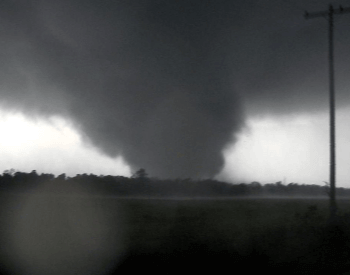
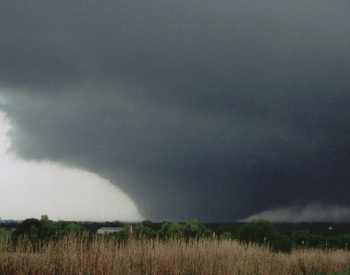
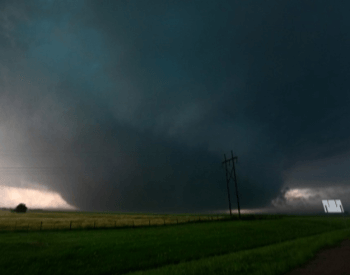
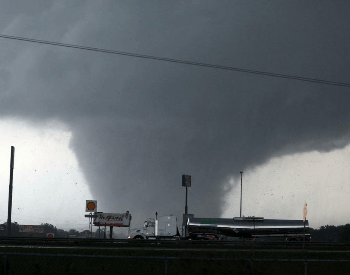
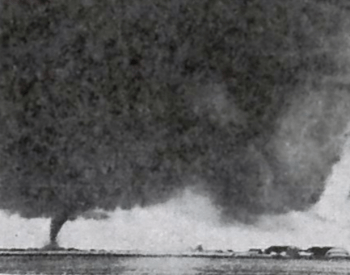
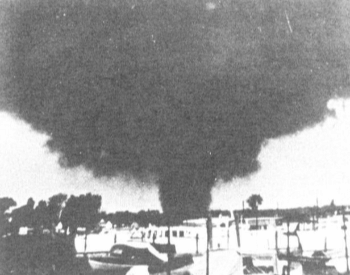
Additional Resources for Tornado Research
- Severe Weather 101: Tornado Basics – Basic tornado facts for kids from the National Severe Storms Laboratory.
- Tornado Data – Tornado historical data from Tornado History Project website..
- Tornado Awareness – Tornado awareness and data from the National Weather Service.
